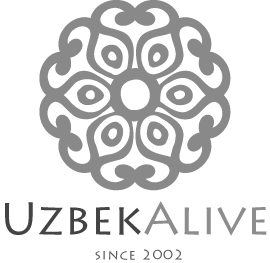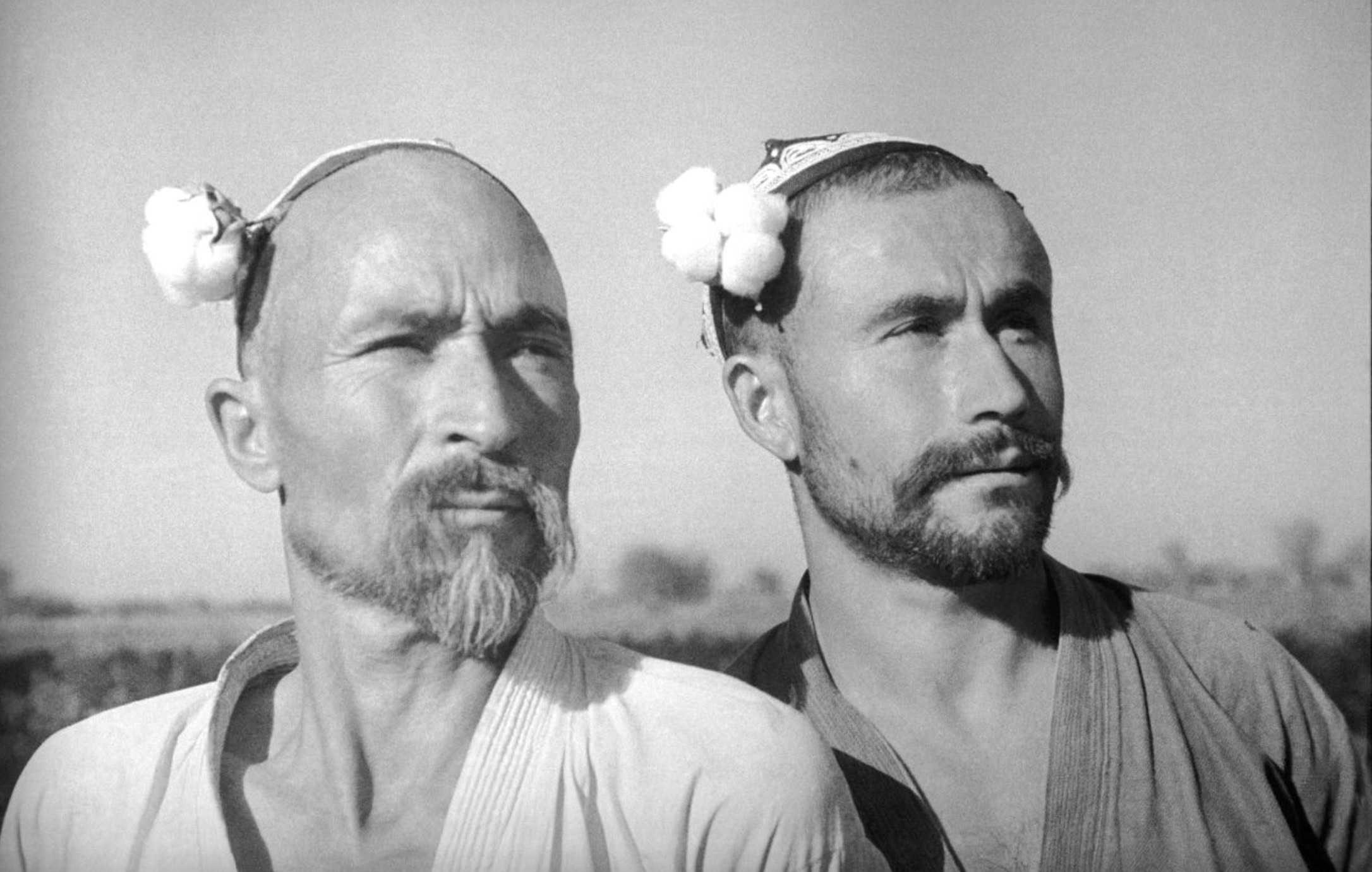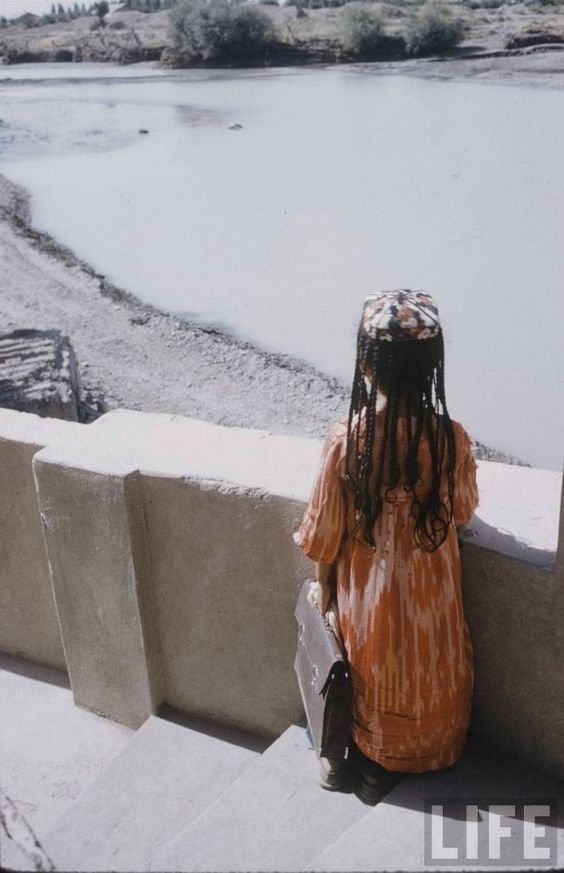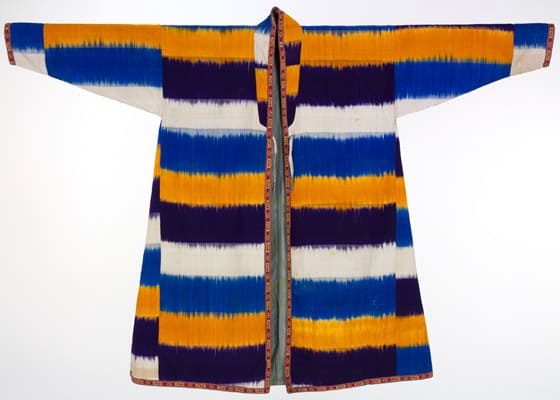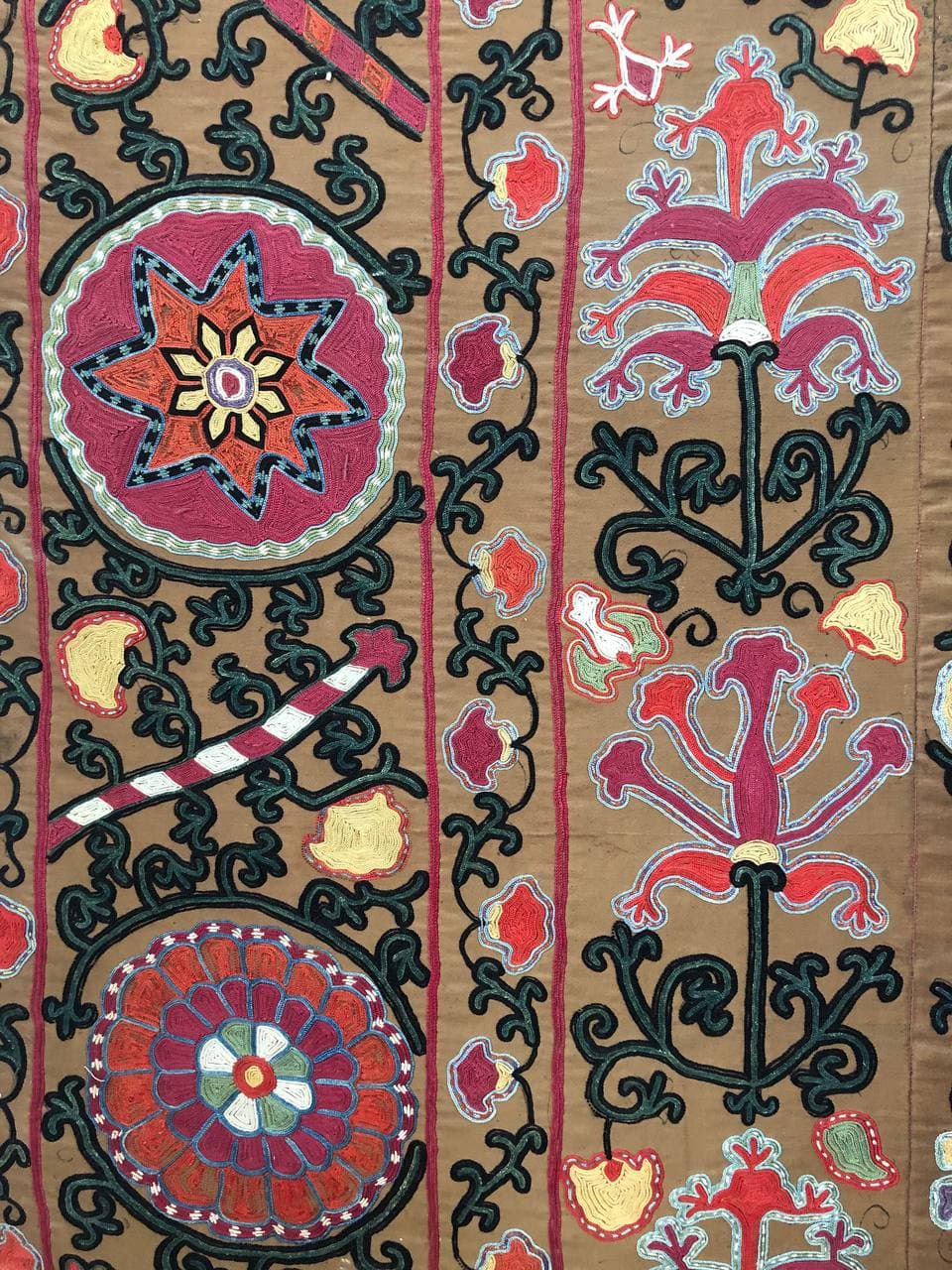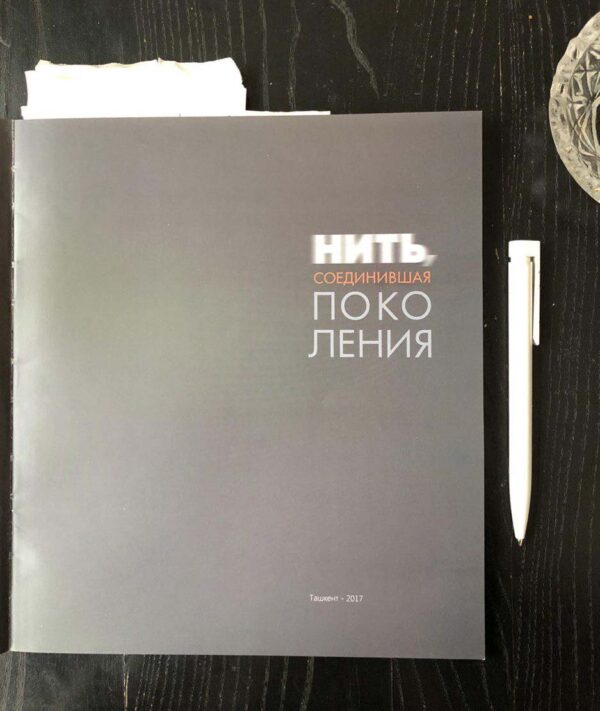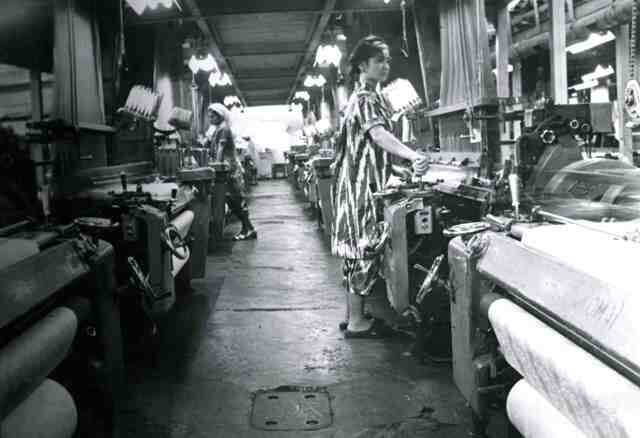1960s’ Uzbekistan, clay walls, floor mats, ikat dress and a skullhat
“Visiting an Old Kolkhoz Farmer”1964 photo album of Central Asia and Kazakhstan “Visiting an Old Kolkhoz Farmer”—this is the title of a photograph from the 1964 album Central Asia and Kazakhstan. Several interesting details stand out in this image: The simple clay walls
Ikat fabrics and “white gold” of Uzbekistan
Our ikat fabrics, renowned for their vibrant patterns and texture, are usually comprised of approximately 50% cotton and 50% silk, blending traditional craftsmanship with local agriculture. This article delves into the history of cotton production in Turkestan, presently known as Uzbekistan, where cotton cultivation has been a cornerstone of the region's economy and culture for centuries.
Brief Historical Note on Uzbekistan's "White Gold"
Cotton, often referred to as "white gold," has long been a strategically significant crop. Its cultivation began in 19th-century Turkestan. Interestingly, the region’s evolution into a major cotton producer is a direct effect of the abolition of slavery in the United States. With the disruption of American cotton supplies, which were crucial to the Russian economy and military, Tsarist Russia turned its attention to Turkestan.
Among all its colonized territories, Turkestan had the ideal climate for cotton cultivation. Initially, local farmers grew cotton for export which was very minimal and the population's use.
Originally cultivated to meet the demands of the Russian Empire’s population and military, cotton, over the years, has since become a vital part of the economy. It plays a key role in providing affordable clothing and supporting military efforts. Over time, the narrative of cotton has become one of pride, enrichment, power, and military strength, but it has also brought serious ecological issues to the region.
1958 school girl | ikat dress and memories
We love this photo! It is from “Life” magazine archives and was taken in Tadjikistan in 1958 by an American photographer Howard Sochurek during his travels in the former USSR.
As a woman born and raised in Soviet Central Asia, this photo resonates deeply with me. It evokes a rush of nostalgia and fills my heart with warmth. It beautifully captures the essence of that era, speaking volumes about a social landscape of those times.
In 1958, the girl in this photo resembles how our mothers appeared when they attended Soviet schools: dressed in ikat dresses, hair traditionally braided in many braids, and carrying school bags far too large for their height and age. There was a clear determination to study!
How 19th-Century Ikat Pattern Wove its Way Back into 21st-Century ikat scarf
In the world of fashion, we have seen the significant impact of wars, famines, and diseases. A similar fate befell on Uzbek ikat patterns and ikat weaving traditions. The Soviet State had a huge impact on Central Asia’s rich textile heritage.
Suzani exhibition in a harem
this post is about suzani, not so much about harem but I would like to start with some historic information to give you a context.
Summer residence of Emir of Bukhara: Sitorai Mohi-Hosa
The last Emir of Bukhara had his summer residence in the outskirts of Bukhara. The palace was built in the early 20th century. The style of the palace is a representation of the Emir himself - the man who stood between Eastern and Western traditions and curiously absorbed both. Russian influenced architecture of the palace was mixed with French furniture, Polish chandeliers, Chinese porcelain and Dutch heaters covered with German tiles. Colorful glass and plaster wall decorations In geometrical patterns indicate that the place belonged to a Muslim sovereign.
“Bukharian pattern” pure silk ikat fabric by Rasul Mirzaakhmedov
I recently discovered a book "The yarn connecting generations" published in Tashkent in 2017. The book is in Uzbek and Russian. The book is a tribute to works of two ikat artisans from Margilan - Turgunboy and Rasul Mirzaakhmedovs, a famous father and son duet. They revived some Central Asian ikat patterns lost during the Soviet times and created many new ones. Turgunboy Mirzaakhmedov passed away years ago - God bless his soul. Rasul, the 9th generation abrbandi ikat maker is continuing his legacy. It was interesting to read the book since I personally knew late Turgunboy aka and know Rasul.
Suzani embroidery: history and present days
I’m reading an amazing book “Silk and cotton: Textiles from the Central Asia that was“ by Susan Meller. My main interest in this book was ikat fabric patterns and antique Ikat ropes. However, the book covers so many areas of Central Asian textiles! There is a whole chapter in the book about Central Asian suzani embroidery.
UzbekAlive's main focus is on ikats but I still wanted to write a short blog post about suzanis to give you some history behind these beautiful embroidered textiles. History creates a background behind a specific product. This way when you buy a little something with a history you end up acquiring knowledge and a piece of cultural heritage.
Why are modern day Uzbek ikat fabrics narrow?
Today's topic is the narrow width of Uzbek ikats fabrics. Many of you ask us why Uzbek ikat fabrics are so narrow. With this post I will try to explain why.
Ikat fabrics and arrival of communism
Ikat weaving has been practiced in Central Asia for centuries by artisans. The arrival of bolsheviks with an idea of communism about 100 years ago put an end to individual craftsmanship and made all manufacturing, including ikat making a government domain. Only state owned textile companies made ikats. Attempts to make ikats at home as a side business was a crime for which artisans could go to a jail. This sounds wild but the Soviet idea was to have everyone economically equal. When someone works secretly at home, in addition to working for a state textile factory, he/she gets richer than others. That was unacceptable to the Soviet regime. The fact that ikat weaving has survived is partly due to these "crimes" committed by artisans by working in secret.
